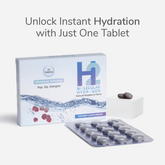Estimated Reading Time: 8 minutes
|Motherhood fills your world with love, wonder, and new challenges every day. From the moment you begin breastfeeding, your instincts take charge. However, doubts keep crawling in. Isn’t it?
One that often lingers is: Am I making enough milk?
Whether you're navigating this journey for the first time or adding another chapter to your parenting story, pumping breast milk can be confusing at times. How much is enough? When should you start? What does your baby actually need?
This guide is designed to simplify the process, helping you understand it, trust your body, and feel confident every step of the way. Let’s begin with what makes breast milk so unique.
Why Is Mother’s Milk So Important for Your Child?
The U.S. Centers for Disease Control and Prevention (CDC) notes that breastfed infants are at lower risk of several health conditions, including asthma and Type 2 diabetes. The first milk produced after childbirth is called colostrum. This thick and yellowish milk is your baby’s first food, and it's perfectly tailored to meet their evolving nutritional needs. It supports immune function, digestion, and overall growth. Colostrum is also called the ‘liquid gold’ because of these properties -
-
Rich in antibodies that promote immune health
-
Easy to digest compared to formula
-
Contains the right blend of fats, proteins, and carbohydrates
Breastfeeding is not the only option to help keep your baby full with your milk. You can also pump milk and store it for your baby. But what exactly is pumping?
What Is Pumping Milk?
First of all, you need to understand that pumping milk is not the same as breastfeeding. In these fast-moving times, you may or may not be around your child all day long; this is where pumping milk comes in handy.
Pumping milk refers to the process of extracting breast milk using a manual or electric pump. It's a helpful solution when you're away from your baby or simply want to store milk for future feeds. Pumping not only helps maintain your milk supply but also ensures your baby continues to receive the nourishment they need.
Did you know? Early pumping is a proven way to support milk production. If a baby can't nurse well, starting to pump within 3 hours after birth can boost milk supply and improve feeding and health outcomes.
But it may not be the simplest thing to understand. Sometimes, you might produce a lot less milk than usual, and at times, you might end up feeling exhausted and confused. The milk requirement of your child changes over time, sparking many questions. Here is a guide to how much milk your growing baby might need.
How Much Milk Does an Infant Need? (Age-Wise Guide)
Your baby’s appetite grows as they do, so their milk needs to change too. Here's a general guideline for daily intake:
-
Day 1-3 (Newborn Phase)
-
Stomach size: about the size of a cherry
-
Daily milk need: 5-7 ml per feeding, 8-12 times a day
-
Day 4-7
-
Stomach size: the size of a walnut
-
Milk needed: 22-27 ml per feeding
-
Weeks 2-4
-
60-90 ml per feeding
-
Frequency-around 8 times a day
-
1-6 Months
-
Babies usually consume around 750-900 ml per day in total
-
Frequency: 6-8 times daily
Let's explore the fundamental questions in the next segment.
How Much Milk Should You Be Pumping?
Well, it’s not always a one-size-fits-all situation. It all varies based on numerous factors, such as your baby’s age, your milk supply, and whether you’re exclusively pumping.
Each session of milk pumping is about 15-20 minutes, during which you should precisely produce about -
-
30-60 ml per session (both breasts combined) in the initial weeks after birth.
-
Once you become accustomed to pumping milk, you can produce approximately 90-120 ml per session.
To be precise, you can pump approximately 750-1000ml of milk per day as a healthy mother who has adapted to the milk pumping process.
Pro tip - Avoid over-pumping, as it may lead to soreness or nipple trauma.
How Often Should You Be Pumping?
Pumping can feel overwhelming at first, but the frequency of pumping depends on your goals and routine. Whether you’re exclusively pumping, going back to work, or just saving a little extra milk, your pumping schedule can be flexible. Here’s how often you should ideally pump as a new mother -
1. If You're Exclusively Pumping
If your baby isn’t breastfeeding directly and you're giving only pumped milk, you’ll need to pump as often as a newborn would normally feed.
Pump every 2 to 3 hours, that’s about 8 to 12 times a day, including nights. This helps your body learn to make enough milk.
2. If You’re a Working Mom
Going back to work? You can still maintain your milk supply while you’re away from your baby.
-
Pump every 3 to 4 hours during your workday
-
Try to match your baby’s feeding times as closely as possible
3. If You're Building a Freezer Stash
Want to save milk for future use, for trips, work, or just peace of mind?
-
Pump once a day, ideally after your baby’s first morning feed
-
Morning supply is usually the highest, so you’ll get the most milk with the least effort
Your body makes milk based on demand. When you pump regularly, you’re telling your body, “Hey, keep making milk.”
Skipping sessions often, especially in the beginning, might confuse your body and reduce your supply over time.
But do you need to be on it from the time your child is born, or is there a perfect time?
When Should You Start Pumping?
As a new mother, it is essential to understand when you can start pumping and storing your milk after delivering your baby. Timing can influence both milk production and comfort.
-
First Week After Birth
Only pump if medically needed, for example, if your baby is having trouble latching, was born early, or if your doctor recommends it. In most cases, direct breastfeeding is enough at this stage
-
Week 3-4
This is a great time to start pumping if you want to build a freezer stash or are getting ready to go back to work. Your supply is more stable now, and pumping once a day (usually after the morning feed) can help you collect extra milk without overwhelming you.
-
Week 4 after birth
By the time you reach week 4, your milk supply has typically settled into a more regular pattern. Your body has learned how much milk your baby needs based on how often they feed. This is when pumping becomes more flexible and can be adapted to your lifestyle.
Pro Tip: Start pumping in the morning when prolactin (milk-producing hormone) levels are highest.
Now, let's explore the factors that affect milk production or the pumping process.
Factors That Affect Milk Production
Many variables can impact how much milk you pump:
-
Hydration and Nutrition: Drink enough water and consume foods that support lactation
-
Stress: Can inhibit the let-down reflex
-
Sleep and Rest: Essential for hormonal balance
-
Pump Type: Hospital-grade pumps often yield better results
-
Breastfeeding Support: Lactation consultants can help with technique and schedule
A 2021 review commented that psychological support and rest played a crucial role in enhancing lactation outcomes among postpartum mothers.
Even after following all the right steps, your baby might still cry for more: leaving you unsure why. It could mean they're still hungry, so how can you be sure they’re getting enough milk?
Signs Your Baby Is Getting Enough Milk
Even if you pump, it’s essential to monitor your baby’s well-being. Here are signs you can observe:
-
At least 6-8 wet diapers a day
-
Steady weight gain
-
Calm and relaxed after feeding
-
Meeting developmental milestones
If you are in doubt, always consult your pediatrician or a lactation consultant.
Pro Tips to Make Pumping Easier
-
Create a dedicated pumping space: Providing comfortable seating and privacy can make sessions more relaxing.
-
Use warm compresses: They help stimulate milk flow
-
Massage your breasts before pumping: Encourages let-down
-
Track your output: Helps you understand your rhythm and supply trends
Conclusion
While breastfeeding might look like the healthiest option that also keeps you really close to your child, pumping milk has always been a viable option for all mothers. Pumping helps you nourish your child even when you are busy and not physically present.
It is definitely a commitment and the most important thing that ensures your child's health and growth. With this guide, you can carry on taking over the world without worrying if your child is hungry. This will help you enjoy your role as a mother who is a wellness champion with all the confidence and assurance.
Disclaimer: These statements have not been evaluated by the FDA. This blog is for informational purposes only and is not intended to diagnose, treat, cure, or prevent any disease.
FAQs
Q1. Is it normal to get different amounts from each breast?
Yes, each breast may have a different supply. It’s completely normal.
Q2. Can you over-pump?
Yes, pumping too frequently or for too long can cause soreness or oversupply issues.
Q3. Is night pumping necessary?
For newborns, yes. Night pumping helps maintain supply due to high prolactin levels.
Q4. How much milk can a woman produce in 24 hours?
By two weeks after birth, most women produce 500–700 ml of breast milk in 24 hours. Once their supply is established, they typically produce 750–1,035 ml (25–35 ounces) each day.
References:
-
Nagel, E.M. et al. (2021) 'Maternal Psychological Distress and Lactation and Breastfeeding Outcomes: a Narrative Review,' Clinical Therapeutics, 44(2), pp. 215–227. https://doi.org/10.1016/j.clinthera.2021.11.007.
-
Breastfeeding benefits both the baby and the mother (2025). https://www.cdc.gov/breastfeeding/features/breastfeeding-benefits.html.
-
Bottle-feeding routine – Baby feeding chart - Aptaclub (2025b). https://www.aptaclub.co.uk/feeding/formula-feeding/schedule/how-much-and-how-often.html.






































